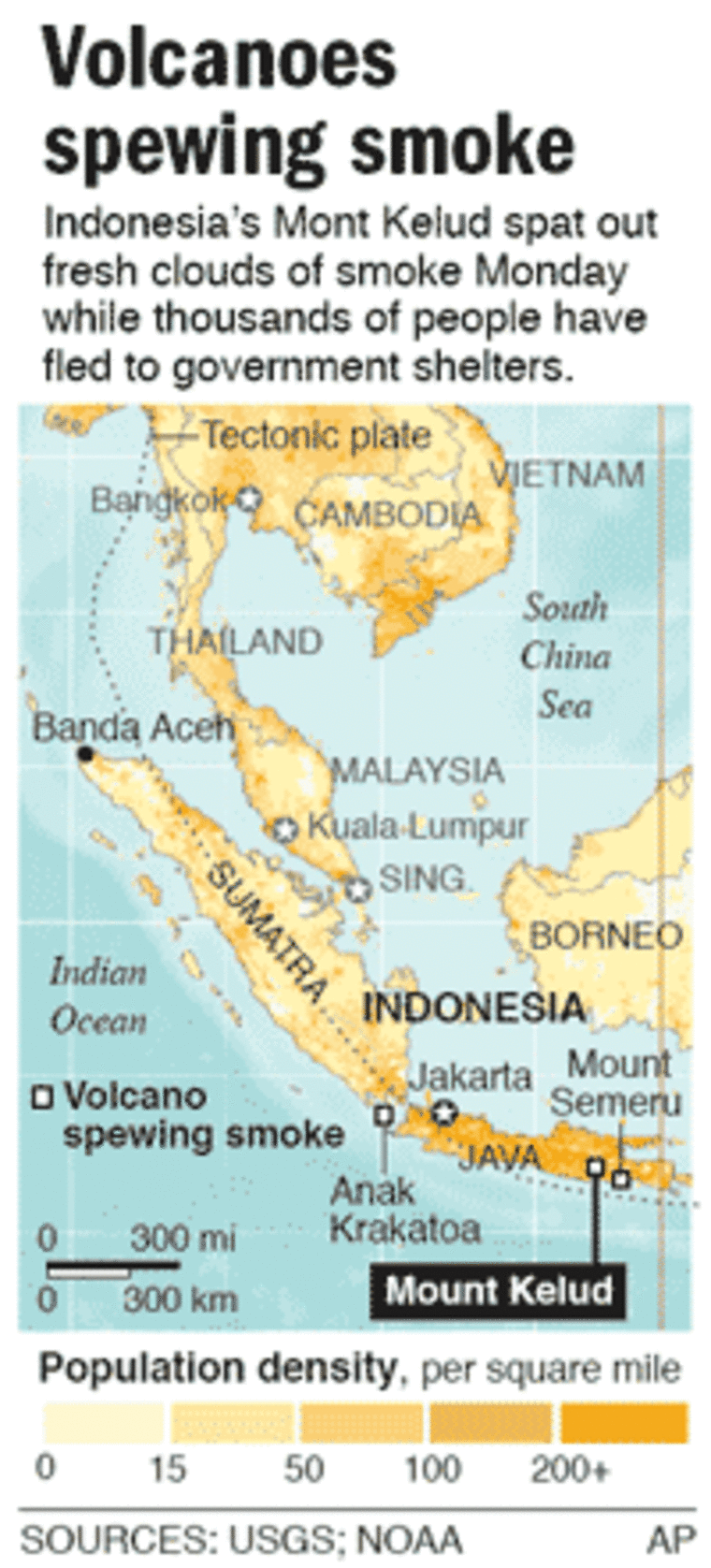Several Indonesian volcanos spewed hot ash, molten rock and clouds of dark smoke Monday, and scientists warned a violent eruption could come at any moment.
The most threatening was the deadly Mount Kelud on densely populated Java island, where a dome of magma was forming under a crater lake and soaring temperatures overheated monitoring equipment.
A few hundred miles away, Anak Krakatao, or the “Child of Krakatoa” in English, fired pumice and lava onto its slopes.
At least one other of Indonesia’s approximately 100 active volcanoes sent bursts of ash showering down on nearby villages.
Experts said there was no connection between the heightened activity at the different volcanos along the tropical archipelago.
Authorities monitoring the peaks were most concerned about Kelud because of its deadly history, including a 1919 explosion that killed thousands.
The temperature of the crater lake on Mount Kelud was so great that nearby monitoring equipment stopped working, said Surono, one of 16 volcanologists watching over the peak 24 hours a day. Like many Indonesians, he uses only one name.
Little panic
Despite the threat, there was little sense of panic on Kelud’s slopes, witnesses said.
While several thousand people have fled to government shelters, authorities said Sunday that around 25,000 others were ignoring evacuation orders and remained in the danger zone around Kelud.
Officials have made no attempts to prevent people from traveling inside a six-mile zone around the peak that the local government says is off-limits.
“I feel it is OK to stay here,” said Sukirno, who was tending papaya plants four miles from the peak. “No one can guarantee our safety apart from ourselves.”

Kelud has been on the highest alert level for more than two weeks. But since Friday, scientists have been warning an eruption was imminent based on the frequency of tremors shaking and its intense heat.
In 1990, Mount Kelud spat out red-hot gases, mud and lava that killed more than 30 people and injured hundreds. In 1919, a powerful explosion that reportedly could be heard hundreds of miles away killed at least 5,160.
“If it goes this time, it will be much larger than in 1990,” said Surono, basing his prediction on the number of tremors and the lake temperature — both of which have been much higher than in the days preceding the earlier blast.
Dome formed in crater
The team monitoring the volcano has also said an eruption may be small or gradual — or might not happen at all given the unpredictable nature of the 5,679-foot mountain.
Images of Mt. Kelud’s crater lake showed a dome had formed, but thick steam made it difficult to estimate its size, volcanologist Umar Rosadi said.
Around 40 miles southeast of Kelud, Mount Semeru was also putting on a display, sending out clouds high into the air that coated buildings in nearby villages and the town of Blitar with a fine layer of ash, witnesses said.
Ash rain from Semeru is common in the town, and Rosadi said people had no need to worry. No evacuations were ordered.
Anak Krakatoa was formed off the northern tip of Java island after a massive eruption at the giant Krakatoa volcano in 1883. That blast was heard nearly 2,000 miles away in Australia and sent surges of gas and burning ash which, combined with a tsunami, killed at least 36,000 people.
Indonesia is spread across 17,500 islands and is prone to volcanic eruptions and earthquakes because of its location within the so-called “Ring of Fire” — a series of fault lines stretching from the Western Hemisphere through Japan and Southeast Asia.